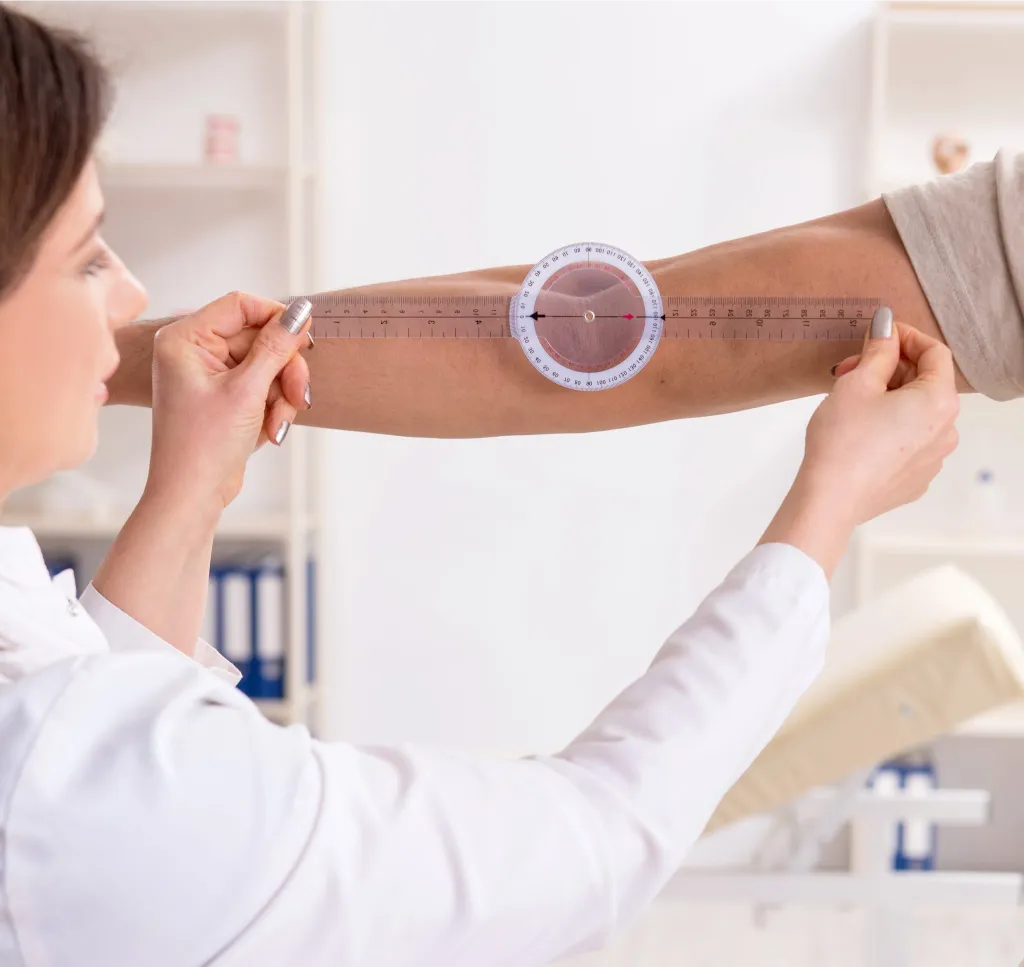Elbow joint disorders in children – causes, symptoms and treatment
Introduction - Why are elbow disorders important?
Disorders of the elbow joint in children are rare, but should not be underestimated. Early diagnosis and targeted treatment can prevent long-term damage and maintain mobility. In my orthopaedic practice in Vienna, I offer modern diagnostic and therapeutic methods for treating these specific conditions.
This article provides comprehensive information about the most common elbow disorders in children, their causes, symptoms and treatment options.

Overview of the most common elbow disorders in children
Elbow disorders can be divided into congenital and developmental disorders. While congenital malformations are extremely rare, developmental problems are more common.
Congenital diseases
- Dislocation of the radial head
- Complete dislocation of the elbow joint
- Adhesion of radius and ulna
- Shortening or defects of the radius or ulna
A special category is aseptic bone necrosis, in which parts of the affected joint surface die off, usually for unknown reasons. These include Panner’s disease and osteochondrosis dissecans.

Aseptic bone necrosis - causes and symptoms
Panner's disease
Panner’s disease is the most common aseptic bone necrosis in the elbow joint and mainly affects boys between the ages of six and ten. It manifests itself as pain and occasional movement restrictions, but usually heals spontaneously.
Osteochondrosis dissecans - a serious disease
Osteochondrosis dissecans mainly affects adolescents between the ages of 11 and 17, especially athletes who perform intensive throwing movements, such as handball or baseball players. Repeated micro-injuries lead to a circulatory disorder, causing a limited area of the joint surface to die off.
Symptoms
- Pain during movement
- Stiffness and limited mobility
- Night pain
- Joint blockages and "cracking" in the elbow
Treatment options for osteochondrosis dissecans
Treatment depends on the stage of the disease:
- Stages 1 & 2: Conservative therapy with immobilization of the arm (e.g. with a splint) for several weeks.
- Stages 3 & 4: Surgical treatment to remove or reattach the detached fragment.
Surgical techniques for treatment
- Arthroscopic debridement - removal of dead tissue
- Microfracturing - stimulation of cartilage healing
- Retrograde drilling - improvement of blood circulation in the affected area
- Osteochondral transplantation ("mosaicplasty") or cartilage cell transplantation - restoration of the joint surface with healthy cartilage cells
Osteochondromatosis - a rare but serious disease
In osteochondromatosis, several free joint bodies form, leading to repeated blockages and pain. This disease usually affects young adults and should be treated early to prevent joint degeneration.
Symptoms of osteochondromatosis
- Joint blockages in flexion or extension
- Joint swelling and effusions
- Restricted movement and pressure pain
Diagnosis & treatment: The diagnosis is made by X-ray or arthroscopy. Treatment consists of arthroscopic joint cleaning, during which loose bodies are removed and the joint lining is treated.
Conclusion - When should you see an orthopaedic surgeon?
Elbow pain, stiffness or recurring blockages should not be ignored. Early diagnosis and targeted treatment can prevent long-term damage. In my practice in Vienna, I offer specialized diagnostics and individually tailored treatment methods.
Frequently asked questions
Typical signs are elbow pain, restricted movement and occasional joint blockages.
No, Panner’s disease usually heals without permanent damage. However, an orthopaedic examination is recommended.
Surgical intervention is necessary if a free joint fragment is present or conservative treatments are unsuccessful.
Untreated diseases can lead to osteoarthritis or restricted mobility. Early treatment is crucial.
I offer comprehensive diagnostics as well as customized conservative and surgical treatments for elbow disorders.
Contact me for a personal consultation!
If you or your child suffer from elbow pain, don’t hesitate to make an appointment at my practice in Vienna. I will be happy to help you!